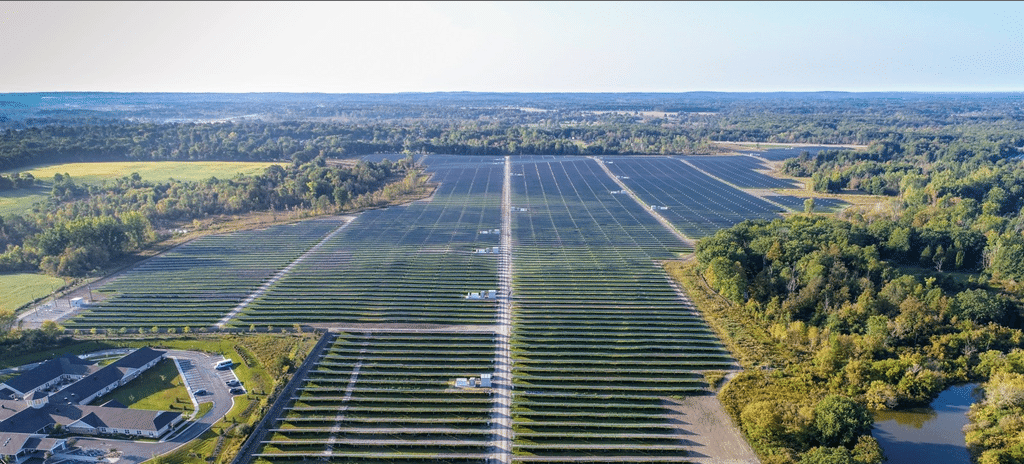Following prior commitments to triple its renewable energy capacity over the next decade and reach “net-zero” carbon emissions by 2050 for its electric utility, DTE Energy has deemed its renewable energy future important and demanding enough to set up a renewables arm that will be responsible for all aspects of its clean power business.
The job of running the renewable show will go to Irene Dimitry, current vice president of business planning and development. Dimitry will oversee a $2.5 billion investment in the addition of 2 GW of solar and wind by 2030, which will bring the company’s entire solar + wind portfolio to 3 GW.
The bulk of development in this arm of DTE’s infancy will come from wind generation. This past spring, DTE filed an integrated resource plan, planning for 693 MW of wind, and also 465 MW of “renewable energy” in 2021 under its Voluntary Green Pricing (VGP) program, and possibly as much as 715 MW by 2024. However of those figures, the utility has listed only 11 MW of solar.
This comes in the starkest of contrasts to the 2 GW that SEIA says would give the most cost benefit to its customers. DTE has claimed that the generation would “burden its customers with excess costs,” though testimony presented by SEIA claimed that those 2 GW of solar would save Michigan customers about $100 million through 2040.
DTE’s service area also happens to be split in terms of what type of generation will offer the region the most benefit. According to the study by the Harvard Center for Climate, Health, and the Global Environment DTE’s service area falls partially in the Great Lakes Mid-Atlantic region where solar would be most effective and the Upper Midwest region, where solar trails negligibly behind wind.
DTE’s avoidance of solar in in all forms is nothing new nor shocking. The state of Michigan as a whole has installed just 160 MW so far, while earlier this year DTE, to the surprise of nobody in particular, abolished retail net metering.
We shall see how the development of this renewable energy branch changes DTE’s vision of the future of its generation fleet, if it does so at all. This move by DTE could well prove to be one made just for the ease of managing the company’s new renewable plans, rather than contributing to their development.
Note: This article was edited on 11/13/19. The original article cited testimony from SEIA that 2 GW of solar would save Michigan customers about $1 billion through 2040. SEIA has shared that the previous figure was a miscalculation and that the real number is $100 million. We apologize for the error.
This content is protected by copyright and may not be reused. If you want to cooperate with us and would like to reuse some of our content, please contact: editors@pv-magazine.com.









By submitting this form you agree to pv magazine using your data for the purposes of publishing your comment.
Your personal data will only be disclosed or otherwise transmitted to third parties for the purposes of spam filtering or if this is necessary for technical maintenance of the website. Any other transfer to third parties will not take place unless this is justified on the basis of applicable data protection regulations or if pv magazine is legally obliged to do so.
You may revoke this consent at any time with effect for the future, in which case your personal data will be deleted immediately. Otherwise, your data will be deleted if pv magazine has processed your request or the purpose of data storage is fulfilled.
Further information on data privacy can be found in our Data Protection Policy.